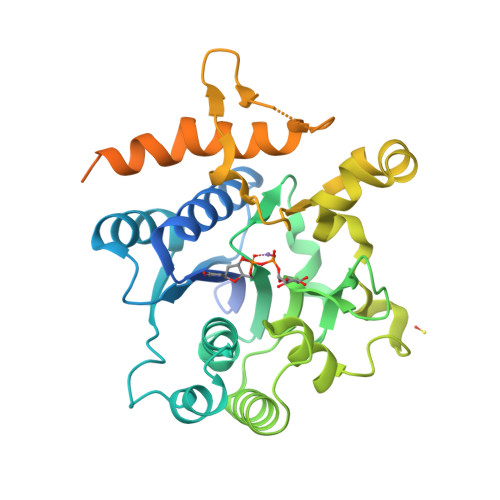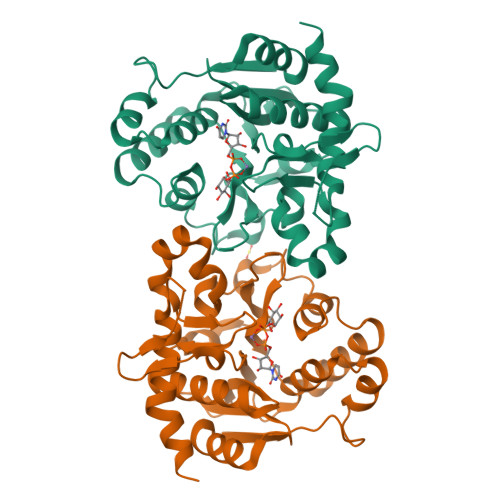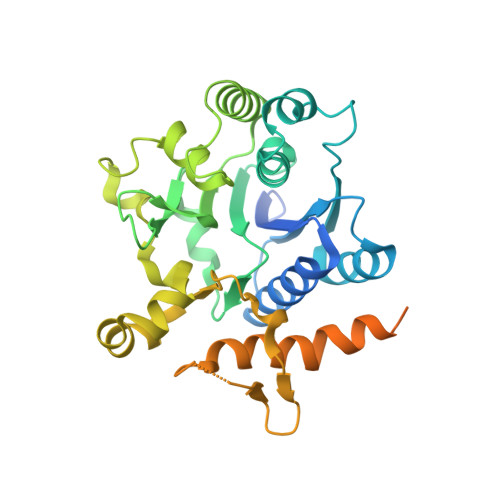Requirements for catalysis in mammalian glycogenin.
Hurley, T.D., Stout, S., Miner, E., Zhou, J., Roach, P.J.(2005) J Biological Chem 280: 23892-23899
- PubMed: 15849187
- DOI: https://doi.org/10.1074/jbc.M502344200
- Primary Citation of Related Structures:
1ZCT, 1ZCU, 1ZCV, 1ZCY, 1ZDF, 1ZDG - PubMed Abstract:
Glycogenin is a glycosyltransferase that functions as the autocatalytic initiator for the synthesis of glycogen in eukaryotic organisms. Prior structural work identified the determinants responsible for the recognition and binding of UDP-glucose and the catalytic manganese ion and implicated two aspartic acid residues in the reaction mechanism for self-glucosylation. We examined the effects of substituting asparagine and serine for the aspartic acid residues at positions 159 and 162. We also examined whether the truncation of the protein at residue 270 (delta270) was compatible with its structural integrity and its functional role as the initiator for glycogen synthesis. The truncated form of the enzyme was indistinguishable from the wild-type enzyme by all measures of activity and could support glycogen accumulation in a glycogenin-deficient yeast strain. Substitution of aspartate 159 by either serine or asparagine eliminated self-glucosylation and reduced trans-glucosylation activity by at least 260-fold but only reduced UDP-glucose hydrolytic activity by 4-14-fold. Substitution of aspartate 162 by either serine or asparagine eliminated self-glucosylation activity and reduced UDP-glucose hydrolytic activity by at least 190-fold. The trans-glucosylation of maltose was reduced to undetectable levels in the asparagine 162 mutant, whereas the serine 162 enzyme showed only an 18-30-fold reduction in its ability to trans-glucosylate maltose. These data support a role for aspartate 162 in the chemical step for the glucosyltransferase reaction and a role for aspartate 159 in binding and activating the acceptor molecule.
Organizational Affiliation:
Department of Biochemistry and Molecular Biology, Indiana University School of Medicine, Indianapolis, Indiana 46202-5122, USA. thurley@iupui.edu





















